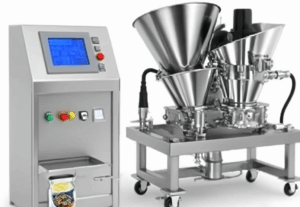Chinese soy sauce has long been a staple in kitchens worldwide, cherished for its rich umami flavor, versatility, and ability to enhance the taste of a wide range of dishes. As a fundamental ingredient in Chinese cuisine, Chinese soy sauce is deeply integrated into cooking traditions, both in China and globally. Its popularity can be attributed to various factors, including its distinct taste profile, cultural significance, and growing demand in international markets.
Table of Contents
Toggle1. The Unique Flavor Profile of Chinese Soy Sauce
Chinese soy sauce is known for its complex, balanced taste, which is achieved through a natural fermentation process. Unlike some other soy sauces, which are chemically produced, traditional Chinese soy sauce undergoes a fermentation process that can take several months to years. This creates a deep, savory umami flavor that enhances the taste of both meat and vegetables, making it an essential ingredient in many Chinese dishes.
Chinese soy sauce is typically divided into two main types: light soy sauce and dark soy sauce. Light soy sauce has a saltier, more delicate flavor, while dark soy sauce is sweeter and thicker, often used for braising and adding color to dishes. The differences in flavor and texture provide chefs with a wide array of options for various cooking styles.
Nutritional Value and Health Benefits
Chinese soy sauce is not only prized for its taste but also for its nutritional benefits. It is rich in amino acids, particularly glutamic acid, which contributes to the umami taste. Additionally, it contains antioxidants and is low in fat, making it a healthy alternative to other seasoning options like salt or sugar. Some studies suggest that traditional fermentation methods may also yield probiotic benefits, promoting gut health.
2. Cultural Significance and Traditional Methods
Chinese soy sauce is more than just a condiment; it is an integral part of Chinese culture. The tradition of soy sauce brewing dates back over 2,500 years, and it remains a symbol of Chinese culinary heritage. The most renowned regions for producing soy sauce include Zhejiang, Guangdong, and Shandong provinces, each with its unique methods of production that have been passed down through generations.
In Chinese cuisine, soy sauce is used in nearly every dish, from stir-fries to soups and marinades. It is not only used as a seasoning but also as a way to bring out the natural flavors of the ingredients. The versatility of Chinese soy sauce, combined with its deep-rooted cultural significance, has contributed to its widespread popularity.
The Rise of Chinese Soy Sauce Globally
In recent years, Chinese soy sauce has seen a surge in demand globally. According to market research, the global soy sauce market was valued at over USD 10 billion in 2020 and is expected to grow at a compound annual growth rate (CAGR) of 4.5% through 2027. This growth is largely driven by increasing interest in Asian cuisine, the rise of food fusion trends, and the growing number of health-conscious consumers seeking low-sodium, natural alternatives to traditional seasonings.
3. Chinese Soy Sauce in Modern Cooking
The modern food industry has embraced Chinese soy sauce not only for its culinary benefits but also for its compatibility with contemporary cooking styles. From home kitchens to Michelin-starred restaurants, chefs around the world use Chinese soy sauce to elevate their dishes. Its applications extend beyond traditional Chinese food to Western and fusion cuisines, where it is used in sauces, dressings, and marinades.
In fact, Chinese soy sauce is increasingly popular in plant-based diets, as it adds a savory depth to vegetarian and vegan dishes, replicating the umami taste typically found in meat-based recipes. This adaptability further broadens its appeal, attracting a diverse audience of consumers who may not have traditionally embraced Chinese cuisine.
Popularity in Fast-Casual Dining
Fast-casual restaurants that feature Asian-inspired menus have also contributed to the rise of Chinese soy sauce in the global food scene. The demand for quick, flavorful meals, particularly in urban areas, has driven a greater incorporation of Chinese soy sauce in menu items such as rice bowls, noodle dishes, and Asian-style salads.
Conclusion
In conclusion, the popularity of Chinese soy sauce can be attributed to its unique flavor, cultural importance, and versatility in cooking. As more people around the world embrace Chinese cuisine and seek healthier, natural alternatives in their cooking, the demand for Chinese soy sauce continues to grow. With its rich history and wide array of applications, Chinese soy sauce is set to remain a beloved staple in kitchens across the globe for generations to come.
0




